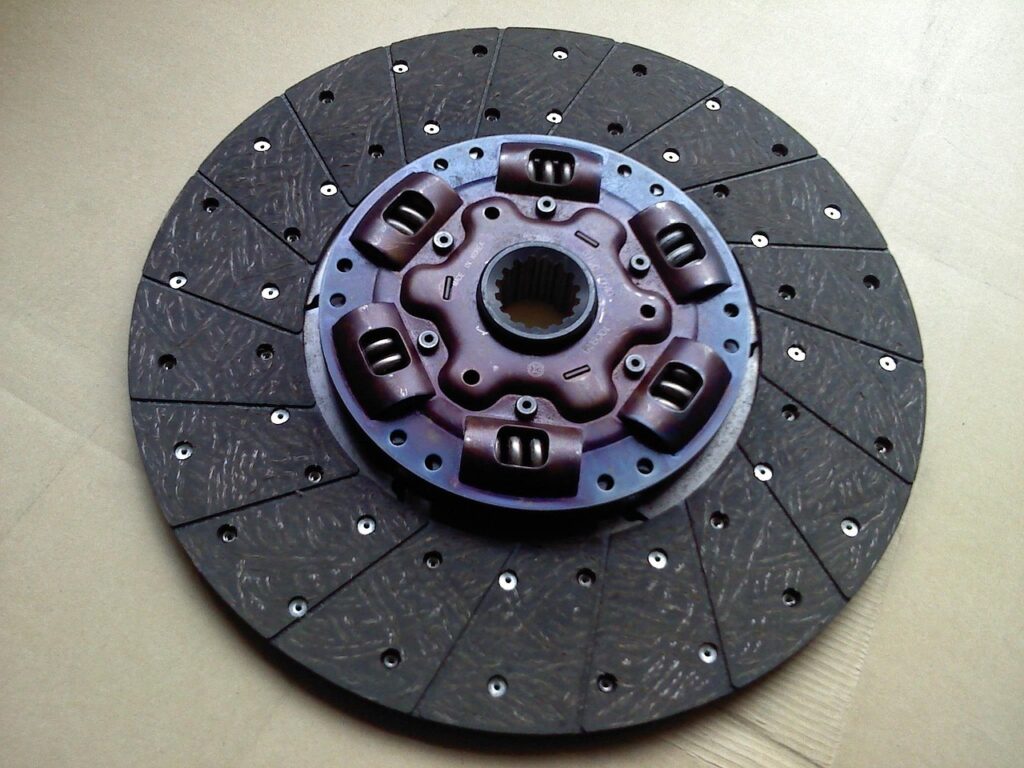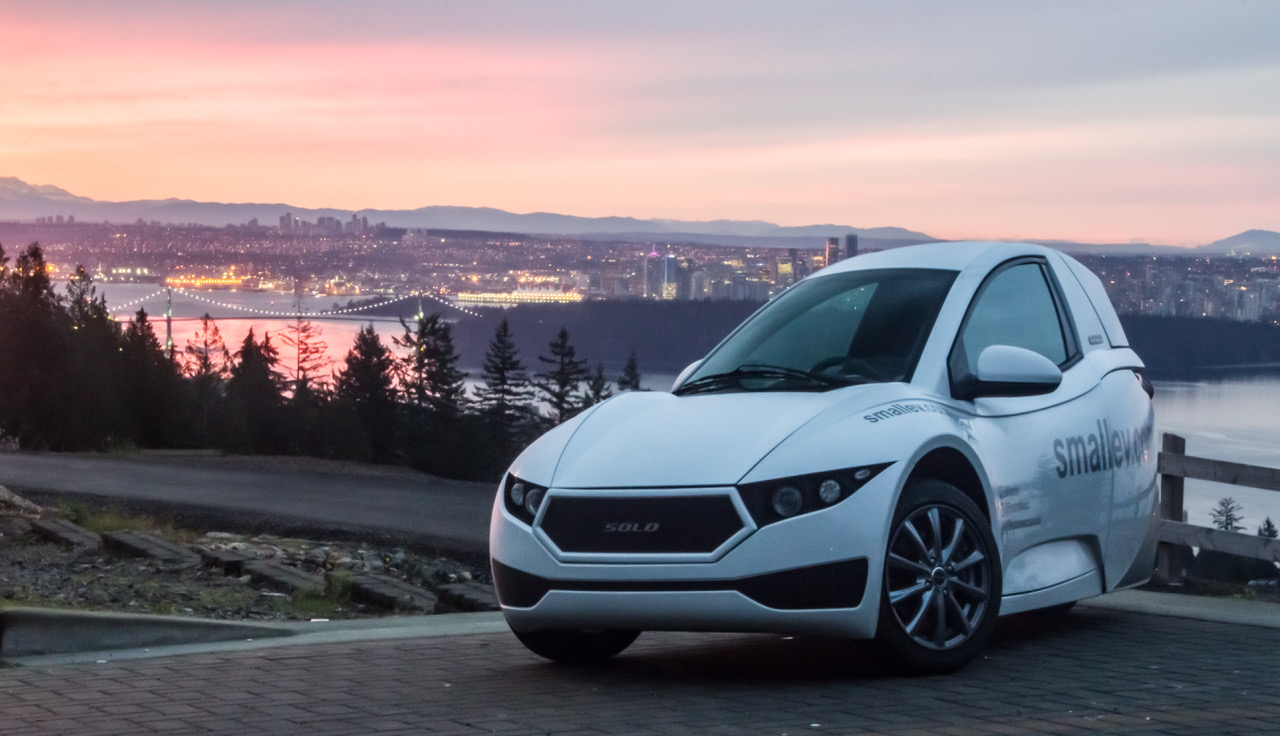
In the fascinating world of classic automobiles, where every curve and every chrome accent tells a story, few design elements hold as much power and personality as the tail lights. Far more than mere safety indicators, these luminous signatures have historically served as the punctuation marks of automotive artistry, transforming the rear of a vehicle into a canvas for daring innovation and unmistakable character. From the jet-inspired aspirations of the 1950s to the sleek, futuristic visions of the late 20th century, tail lights have consistently been a focal point for designers aiming to make a lasting statement.
Indeed, the definition of a “classic” car is as diverse as the vehicles themselves, but for our purposes, we’re casting a wide net, embracing both “vintage” and “classic” models that have graced our roads over the decades. We’re on the hunt for those truly memorable tail light designs, the ones that looked funky, made a bold statement, or perhaps even introduced groundbreaking technology. These aren’t just lights; they’re expressions of an era, reflections of cultural ambitions, and sometimes, a glimpse into the future.
Join us as we embark on an exhilarating journey through automotive history, shining a spotlight on some of the most distinctive and unforgettable tail light designs ever conceived. Our first eight selections showcase how these illuminating elements became central to a car’s identity, often setting trends and capturing the imagination of generations. Prepare to be dazzled by the creativity and engineering prowess behind these truly iconic rear-end statements.
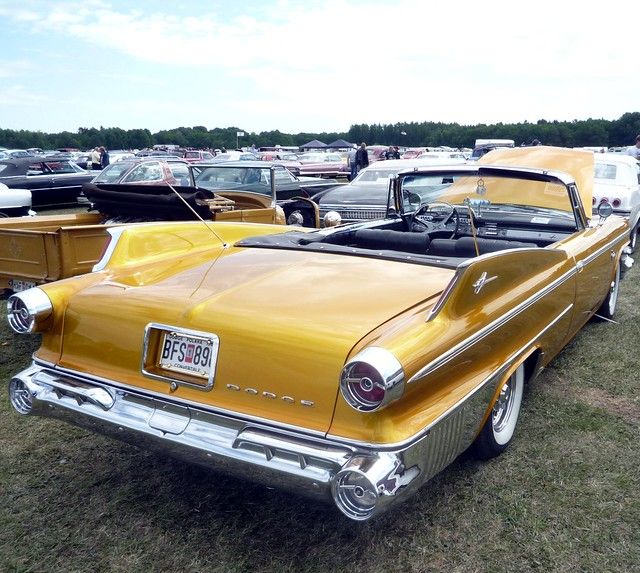
1. **1960 Dodge Polara**When the Dodge Polara burst onto the scene in 1960, it was an instant icon, instantly recognizable for its audacious styling cues. With truncated tailfins that hinted at speed, a massive front grille that demanded attention, and chrome plating adorning nearly every surface, this car was a veritable spectacle on wheels. Its innovative one-piece unibody construction was a real engineering marvel for its time, further cementing its place as a design leader.
The Polara’s design ethos was clearly inspired by aviation, a theme brilliantly carried through to its remarkable tail lights. These are genuine statement pieces, designed to mimic the powerful exhausts of a jet engine, perfectly aligning with the car’s overall airplane-inspired aesthetic. The configuration is particularly noteworthy, featuring four distinct units: two tinted red lights nestled directly behind the tailfins, and two clear units positioned on either side of the rear bumper, creating a truly unique and memorable rear signature.
Beyond its exterior flair, the Polara’s cockpit-inspired dashboard housed an intriguing innovation for the road: an in-dash record player. This cutting-edge feature could accommodate up to 14 records at a time, providing roughly two hours of continuous playback, a luxurious touch that truly set the mood for cruising. The Mark I Polara was a versatile machine, available in five main variants, including a convertible and various hardtop and sedan styles, boasting a grand total of 20 different body styles across two different wheelbase lengths.
Under the hood, the first-generation 1960 Dodge Polara was powered by a formidable 383 cubic-inch (6,276 cc) Ram-Fire V8 engine. This powerhouse delivered a robust 325 hp and 420 lb-ft of torque, all channeled through a manual three-speed transmission. It epitomized the quintessential American dream car of its era: high horsepower, rear-wheel drive, and an undeniably striking appearance that left a lasting impression wherever it went.
Car Model Information: 1963 Dodge Polara
Caption: 1973 Dodge Polara 2-door hardtop
Name: Dodge Polara
Manufacturer: Dodge
ModelYears: 1960–1973
Layout: FR layout
Class: Full-size
Predecessor: Dodge Coronet#Fourth generation (1957–1959)
Successor: Dodge Monaco
Categories: 1970s cars, All Wikipedia articles needing clarification, All articles with unsourced statements, Articles with short description, Articles with unsourced statements from November 2019
Summary: The Dodge Polara is an automobile introduced in the United States for the 1960 model year as Dodge’s top-of-the-line full-size car. After the introduction of the Dodge Custom 880 in 1962, the Polara nameplate designated a step below the full-sized best-trimmed Dodge model; the Polara that year had been downsized to what was in effect intermediate, or mid-size status. In its various forms, the Polara name was used by Dodge until 1973, when its position in Dodge’s line-up was replaced by the Dodge Monaco.
The name Polara is a reference to the Polaris star in a marketing attempt to appeal to the excitement surrounding the Space Race during the early 1960s.
Get more information about: Dodge Polara
Buying a high-performing used car >>>
Brand: Dodge Model: Polara
Price: $46,000 Mileage: 46,182 mi.
Read more about: The Engines of Legend: How Iconic Vehicles Drive Cinematic Narratives and Automotive Innovation

2. **1998 Maserati 3200GT**The Maserati 3200GT holds a special place in the pantheon of automotive greats, not just within the Maserati lineage, but among all cars ever produced. Its debut marked a pivotal moment for Maserati, representing a complete redesign and a triumphant return to the brand’s core values. This model was truly the show-stopper, a curtain call for Maserati’s celebrated biturbo era vehicles, yet it also pointed towards an exciting future.
What truly set the 3200GT apart, especially at its rear, were its new, utterly unique, boomerang-shaped droopy tail light units. These artistic lights resembled tubes elegantly bent from the middle, creating an instantly recognizable and highly distinctive signature. Moreover, these weren’t just a design triumph; they were a technological first, as these tail lights were the very first LED units ever to be factory-fitted to a production car, showcasing Maserati’s pioneering spirit.
Beneath its svelte exterior, the 3200GT housed a heavily modified and upgraded V8 engine, an powerplant also shared with the Quattroporte IV and the Maserati Shamal. Despite its relatively compact 3,217 cc displacement, this engine produced a not-insignificant 370 hp, providing thrilling performance that matched its sophisticated looks. Power was delivered to the rear wheels via either a smooth four-speed automatic gearbox or the more engaging six-speed ZF transmission.
The choice of transmission significantly influenced the car’s character and production timeline. Models equipped with the six-speed ZF transmission were produced from 1998 to 2002, offering a more hands-on driving experience reminiscent of grand touring cars of yesteryear. The automatic four-speed transmission became available later, from 2002 to 2007. Given that Maserati, now part of Stellantis, tends to play it safer with design, the bold innovation of the 3200GT makes its inclusion on this list all the more compelling.

3. **1957 Mk ii Chevrolet Bel Air**Few vehicles embody the spirit of 1950s Americana quite like the 1957 Mark II Chevrolet Bel Air. This car was a pure expression of flamboyance, flair, and an undeniable “look-at-me” attitude that captured the optimism and excitement of its decade. While the massive flared tail fins and gleaming whitewall tires on chrome wheels often steal the show, the Bel Air’s tail lights, though sometimes overlooked, are uniquely captivating units.
The tail lights on the Mark II Bel Air are cleverly split into three distinct sections, each serving a specific purpose. The topmost half-moon-shaped unit holds the most importance, glowing red as the primary brake light, providing a clear signal to trailing drivers. Below it, the middle unit is an oval, untinted reverse light, essential for visibility when backing up and signaling to others that the car is in reverse gear. The bottom housing, as far as can be discerned, is purely aesthetic, contributing to the overall intricate design without containing an actual light unit.
This particular triple-section tail light configuration was exclusive to the 1957 Mark II generation Bel Airs. Chevrolet significantly altered the design in 1958, making the ’57 model’s rear end truly a one-year-only masterpiece. It’s a subtle yet sophisticated detail that adds to the car’s enduring appeal and distinctiveness within its lineage.
Another significant historical detail about the ’57 Bel Air is its engine. It was only the second Chevrolet since the end of the First World War to be fitted with a V8 engine, specifically the 283 cubic inch (3,900 cc), 220 hp small block unit. This was a remarkable achievement, predating even the famous C1, C2, and C3 Corvettes, which would later become iconic rides for several NASA astronauts, linking the Bel Air to a lineage of American power and prestige.
Car Model Information: 2021 Jeep Grand Cherokee Laredo X
Name: Chevrolet Bel Air
Caption: 1957 Chevrolet Bel Air convertible
Manufacturer: Chevrolet
Production: 1949–1980
ModelYears: 1950–1981
Class: Full-size
Layout: FR layout
Predecessor: Chevrolet Fleetline,Chevrolet Biscayne
Successor: Chevrolet Impala
Categories: 1950s cars, 1960s cars, 1970s cars, 1980s cars, Articles with short description
Summary: The Chevrolet Bel Air is a full-size car produced by Chevrolet for the 1950–1981 model years. Initially, only the two-door hardtops in the Chevrolet model range were designated with the Bel Air name from 1950 to 1952. With the 1953 model year, the Bel Air name was changed from a designation for a unique body shape to a premium level of trim applied across a number of body styles. The Bel Air continued with various other trim level designations, and it had gone from a mid-level trim car to a budget fleet sedan when U.S. production ceased in 1975. Production continued in Canada, for its home market only, through the 1981 model year.
Get more information about: Chevrolet Bel Air
Buying a high-performing used car >>>
Brand: Chevrolet Model: Bel Air
Price: $27,316 Mileage: 34,523 mi.
Read more about: Beyond the Chrome: A MotorTrend Deep Dive into Vintage Cars That Command Millions Today
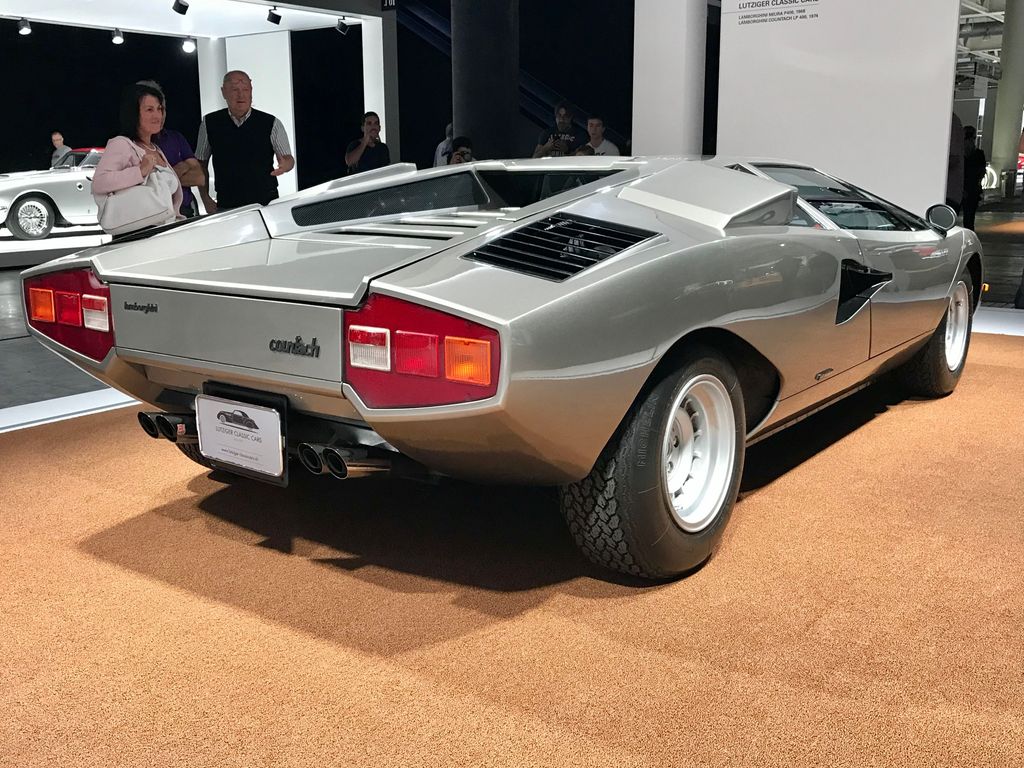
4. **1974 Lamborghini Countach**No discussion of classic cars, particularly those with an undeniable flair for the dramatic, would be complete without a representative from our Italian friends, and the Lamborghini Countach is the quintessential choice. Its celebrated “candy-bar” tail lights have become as iconic as the wedge-shaped supercar itself, having recently marked their 50th birthday in 2021. Lamborghini even paid homage to this legacy with the Countach LPI 800-4, a design as radical in 2021 as the original was in 1971.
The original Countach was undoubtedly the poster car on countless bedroom walls, and its tail lights contributed significantly to its legendary status. Situated directly beneath the famously aerodynamically useless rear wing (yes, the rear wing on the Countach was purely aesthetic, adding to its visual aggression rather than downforce), these lights had a distinctive and functional arrangement. The outer lights were tinted orange, serving as the car’s turn signals, clearly indicating direction.
The middle lights, tinted red, functioned as the brake lights, providing an immediate and unmissable signal. The inner lights were half-tinted red and featured reflectors at the bottom, distinguishing them as the rear backup lights. This overall configuration created an intriguing and highly effective visual signature. While it wasn’t the original intended design—the Countach LP500 prototype featured a radically different set of tail lights—the production version’s “candy-bar” units are nonetheless considered exceptionally cool and instantly recognizable.
Powering the production Countach models was Lamborghini’s flagship V12 engine. At the time, this formidable engine displaced 3.9 liters (3,929 cc), churning out an impressive 375 hp and 368 lb-ft of torque. This immense power was channeled through a five-speed automatic gearbox, enabling the Countach to rocket from a standstill to 100 kph (62.1 mph) in a blistering 5.4 seconds, a performance figure that firmly placed it among the fastest Lamborghinis ever produced at the time.
Car Model Information: 1989 Lamborghini Countach 25th Anniversary
Name: Lamborghini Countach
Caption: Lamborghini Countach LP5000 QV
Manufacturer: Lamborghini
Production: 1974–1990
Assembly: Sant’Agata Bolognese
Designer: Marcello Gandini
Class: Sports car
BodyStyle: coupe
Layout: Longitudinal engine,mid-engine,rear-wheel-drive
Related: Lamborghini LM002
Engine: Lamborghini V12,V12 engine,LP400, LP400 S: {{cvt,3929,cc,L,1,disp=flip
Transmission: synchromesh,Manual transmission
Wheelbase: 96.46 in
Abbr: on (LP5000QV)
Order: flip
Length: 162.99 in
Width: LP 400: {{cvt,74.28,in,mm,0,abbr=on,order=flip
Height: 42.13 in
Weight: {{convert,1300.5,kg,lb,0,abbr=on
Predecessor: Lamborghini Miura
Successor: Lamborghini Diablo
Doors: Scissor doors
Sp: uk
Categories: 1980s cars, 1990s cars, All articles with unsourced statements, Articles containing Italian-language text, Articles containing Piedmontese-language text
Summary: The Lamborghini Countach ( KOON-tahsh) is a rear mid-engine, rear-wheel-drive sports car produced by the Italian automobile manufacturer Lamborghini from 1974 until 1990. It is one of the many exotic designs developed by Italian design house Bertone, which pioneered and popularized the sharply angled “Italian Wedge” shape.
The wedge style was introduced to the public in 1970 with the Lancia Stratos Zero concept car. The first showing of the Countach prototype was at the 1971 Geneva Motor Show, as the Lamborghini LP500 concept.
The “Countach” nameplate was reused for the Sián-based limited-production hybrid-electric model called the Countach LPI 800-4 in 2021.
Get more information about: Lamborghini Countach
Buying a high-performing used car >>>
Brand: Lamborghini Model: Countach
Price: Not Priced Mileage: 7,493 mi.
Read more about: Retro Roar vs. Future Flight: Why These Classic Cars Still Outshine Modern Tech on the Open Road
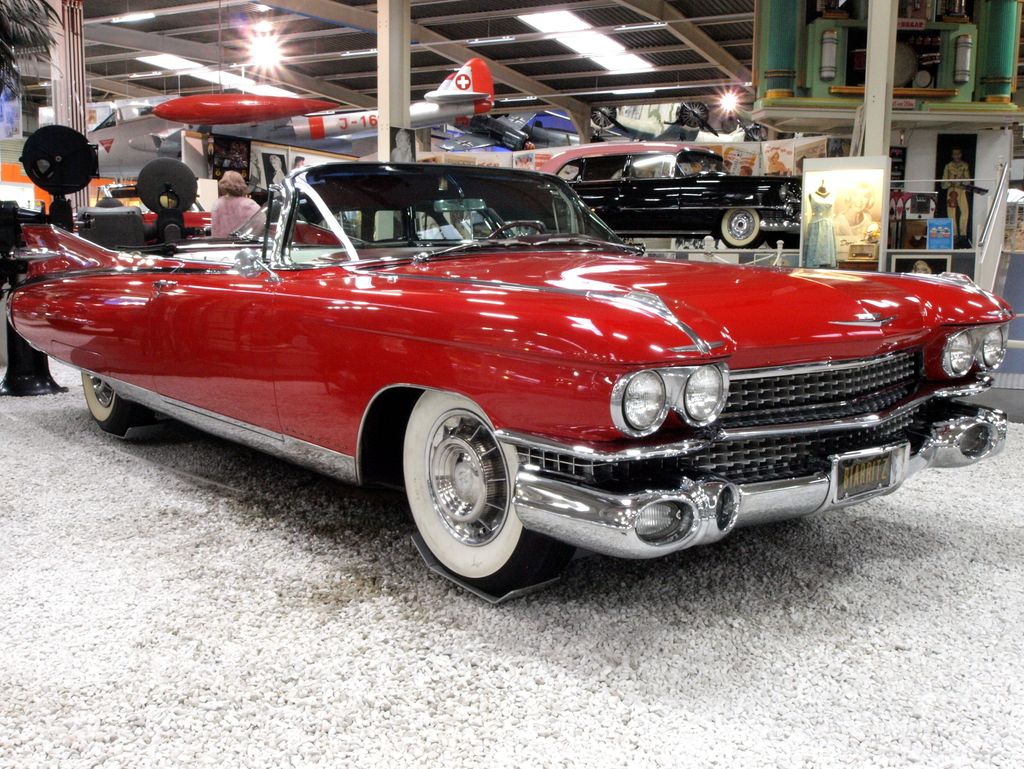
5. **1959 Cadillac Eldorado Biarritz**Standing as one of the most iconic cars of all time, the 1959 Cadillac Eldorado Biarritz is an essential entry on our list of classic cars with genuinely cool tail lights. Specifically, we’re focusing on the fourth-generation Mark V, a model produced between 1959 and 1960 before undergoing a significant redesign in 1961. This generation of the Eldorado showcased some of the most unique and extravagant styling ever applied to an automobile, guaranteeing attention wherever it appeared.
The 1950s were a decade defined by excess and opulence, and the Eldorado Biarritz was nothing less than a grand tribute to this era of extravagance. As people enjoyed more disposable income and a greater desire to display their prosperity, this car capitalized on that sentiment brilliantly. Its towering fins soared nearly 42 inches off the ground, stretching approximately 18 inches from base to tip, making it one of the most dramatic designs of the jet-age decade. Crafted under the direction of Chuck Jordan, the Eldorado blended flamboyance with a distinctly futuristic flair.
Central to its distinctive rear aesthetic were the dual, rocket-shaped bulbs within each tail light unit, majestically mounted near the apex of the rather large rear tail fin. Adding to this dramatic presentation, at the very bottom of the said tail fin, was a single-unit reverse light. This reverse lamp featured elegant chrome accents and a distinctive “V” shaped line running across it from left to right, a detail that, rather amusingly, makes it resemble a distorted Mazda logo—a truly memorable design flourish.
Powering this veritable land yacht was a robust 6,391 cc V8 engine, producing a healthy 345 hp, paired with a smooth four-speed automatic gearbox. This ample power ensured effortless cruising, perfectly befitting its luxurious demeanor. Today, well-restored examples of the Eldorado Biarritz can command prices north of $120,000, a testament to its enduring iconic status and timeless appeal.
Car Model Information: 2021 Jeep Grand Cherokee Laredo X
Caption: 1963 Cadillac Eldorado Convertible
Name: Cadillac Eldorado
Manufacturer: Cadillac
Production: 1952–2002
Layout: Front-engine, rear-wheel-drive layout
Aka: Cadillac Fleetwood Eldorado
Class: Personal luxury car
Successor: Cadillac CTS
Categories: 1960s cars, 1970s cars, 1980s cars, 1990s cars, 2000s cars
Summary: The Cadillac Eldorado is a luxury car manufactured and marketed by the Cadillac Motor Car Division of General Motors from 1952 until 2002, over twelve generations.
The Eldorado was at or near the top of the Cadillac product line. The original 1953 Eldorado convertible and the Eldorado Brougham models of 1957–1960 had distinct bodyshells and were the most expensive models offered by Cadillac during those years. The Eldorado was never less than second in price after the Cadillac Series 75 limousine until 1966. Beginning in 1967, the Eldorado retained its premium position in the Cadillac price structure, but was manufactured in high volumes on a unique, two-door personal luxury car platform.
The Eldorado carried the Fleetwood designation from 1965 through 1972, and was seen as a modern revival of the pre-war Cadillac V-12 and Cadillac V-16 roadsters and convertibles.
Get more information about: Cadillac Eldorado
Buying a high-performing used car >>>
Brand: Cadillac Model: Eldorado Biarritz
Price: $27,316 Mileage: 34,523 mi.
Read more about: The 19 Greatest American Cars That Defined a Generation
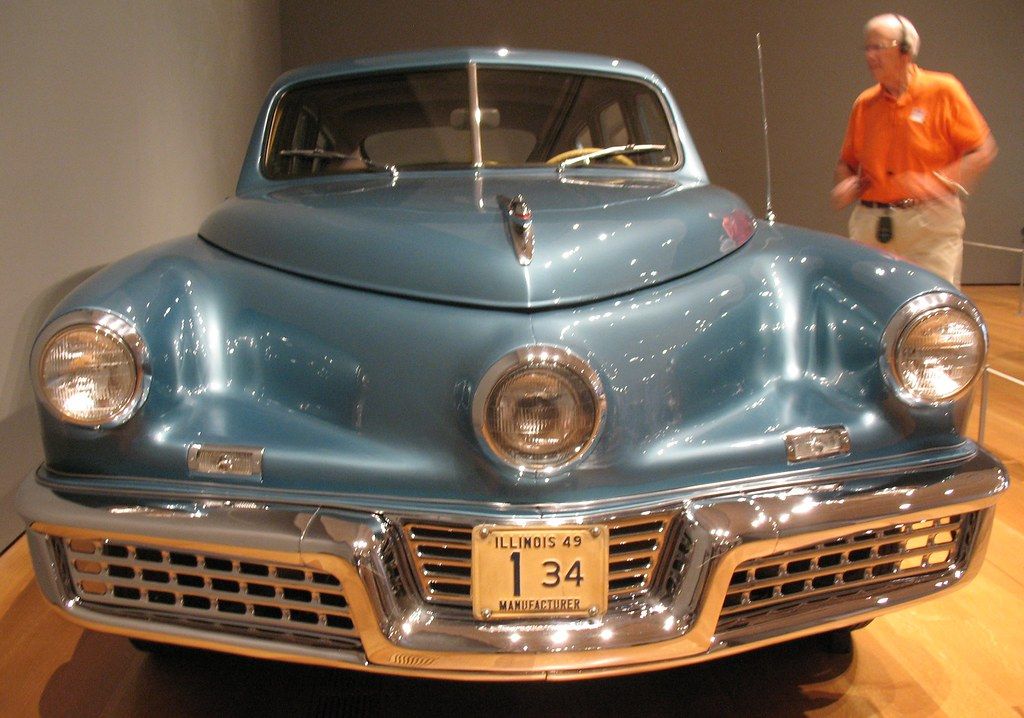
6. **1948 Tucker 48**Preston Tucker, the visionary behind this rolling work of art, embarked on his automotive journey not as a glamorous engineer, but as a humble office boy at Cadillac Engineering. His career path later led him to the manufacturing line at Ford, and he eventually carved a name for himself in automotive sales, rising to regional management at Pierce-Arrow. It was during this period, from 1935 onwards, that he collaborated with another engineer to create the groundbreaking four-wheel-drive Indy 500 race cars for Ford, showcasing his inventive spirit.
As the Second World War began to cast its shadow, Tucker conceived of a car that could serve as a scout vehicle, even coming close to securing a deal with the Netherlands, only for the Germans to overrun the country. However, his dream came to fruition after the war, with the Tucker 48 being produced in 1948. While the prototype boasted advanced features like all-independent suspension, disk brakes on every wheel, and a gargantuan 9,652 cc six-cylinder engine, the production variant received a more practical, though still potent, 166 hp, 372 lb-ft 5,473 cc engine.
The design of the Tucker 48 was nothing short of resplendent, with particular attention lavished on the rear. This area was elegantly appointed with a chrome grille and distinctive “mini-fin tail lights,” which, even amidst the flamboyant design trends of the era, looked like they were plucked straight from a science fiction movie. These futuristic lights were a clear indicator of Tucker’s forward-thinking approach, blending artistic flair with practical illumination.
Tragically, despite its super cool design and innovative features, only 51 units of the Tucker 48 were ever made before the company was forced to declare bankruptcy. This extreme rarity, coupled with its fascinating backstory and iconic design, makes the Tucker 48 one of the most sought-after classic cars in the world today. Collectors can expect to pay well over $2 million for an example, a testament to its legendary status and profound impact on automotive history.
Read more about: Dana Perino & Husband Peter McMahon: Pics That Make Their 18-Year Age Gap *Seriously* Obvious (But Also Show Pure Love)
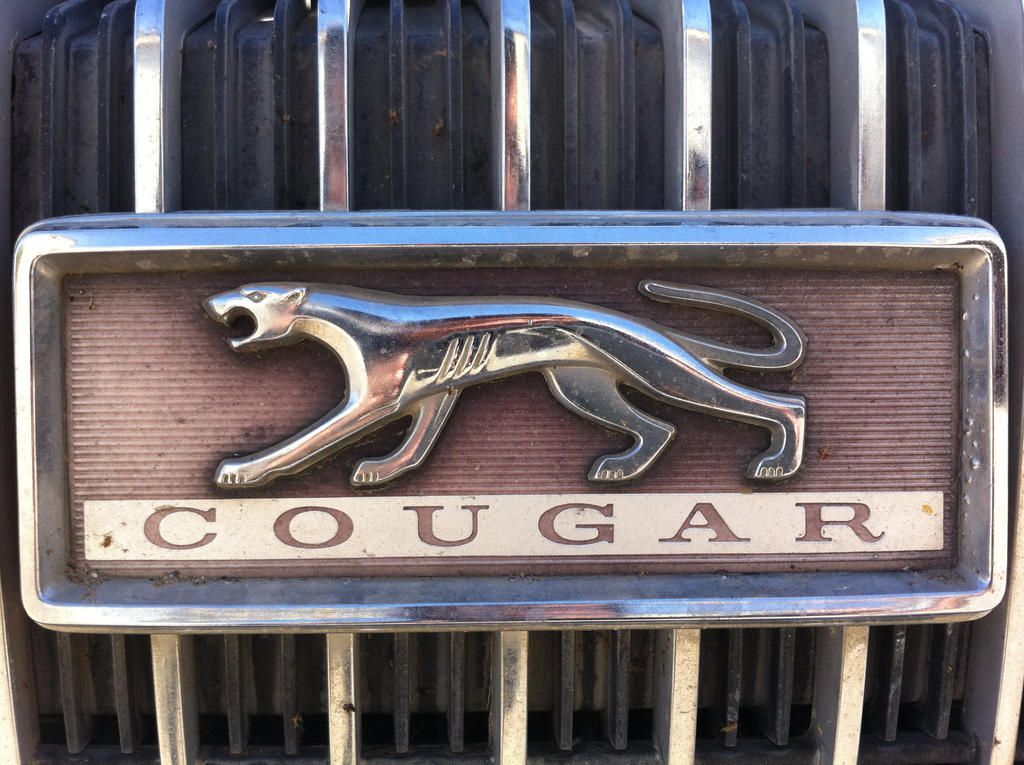
7. **1967 Mercury Cougar**Allow us to introduce you to the 1967 Mercury Cougar, a vehicle renowned for featuring one of the coolest tail light designs ever conceived. The Cougar’s rear end is dominated by two massive units, directly repurposed from the 1956-generation Ford Thunderbirds. Each of these imposing lights stretches over a foot long, and what truly sets them apart is their unique covering, which can only be described as resembling prison bars, evenly spaced from top to bottom.
This distinctive “prison bar” design likely offered a practical benefit in addition to its striking aesthetic: superior impact protection. It’s safe to say that absolutely nothing was reaching the lens of these lights, ensuring their durability. When illuminated, these lights undoubtedly produced a very unique glow pattern, adding to the Cougar’s unmistakable presence on the road. Furthermore, the Cougar featured very cool sequential rear turn signals, a sophisticated touch copied from earlier Thunderbirds, which pulsed in the direction the driver was indicating.
For anyone with an interest in automotive design, the Cougar’s overall appearance will immediately strike a chord of familiarity. This is because the car is, in essence, an upmarket spin-off directly based on the highly successful Ford Mustang, sharing much of its underlying hardware. However, the Cougar received a stretched wheelbase and more luxurious appointments, including hidden front lights, further elevating its status.
Customers had a choice of powerplants, including a 4,735 cc engine that produced either 200 hp or 225 hp, typically paired with a three-speed manual transmission, though a four-speed automatic was also available. When new, the base MSRP for the Cougar was a modest $2,851 (equivalent to $27,350 today), making it only slightly more expensive than its Mustang sibling. A more luxurious XR7 version had a base MSRP of $3,081 ($29,550 today). The 1967 Cougar was a runaway success, selling over 150,890 units, making it the most successful car Mercury ever produced. It even impressively beat out formidable competitors like the Ford Thunderbird, Cadillac Eldorado, and Chevrolet Corvette to win the coveted Car of the Year award from Motor Trend, a testament to its exceptional design and appeal.
Car Model Information: 1995 Mercury Cougar XR7
Name: Mercury Cougar
Caption: 1969 Mercury Cougar (first generation)
Manufacturer: Mercury (automobile)
Layout: Front-engine, rear-wheel-drive layout
ModelYears: 1967–1997,1999–2002
Class: Pony car,Personal luxury car,Mid-size car,Sport compact
Categories: 1960s cars, 1970s cars, 1980s cars, 1990s cars, 2000s cars
Summary: The Mercury Cougar is a series of automobiles that was sold by Mercury from 1967 to 2002. The model line is a diverse series of vehicles; though the Cougar nameplate is most commonly associated with two-door coupes, at various stages in its production, the model also was offered as a convertible and a hatchback. During its production as the mid-size Mercury line, the Cougar was also offered as a four-door sedan and five-door station wagon.
In production for 34 years across eight generations (skipping the 1998 model year), the Cougar is second only to the Grand Marquis (36 years) in the Mercury line for production longevity. 2,972,784 examples were produced, making it the highest-selling Mercury vehicle. During the 1970s and 1980s, the marketing of the Mercury division was closely associated with the Cougar, with promotional materials advertising Mercury dealers as “The Sign of the Cat” with big cats atop Lincoln-Mercury dealer signs. Cat-related nameplates were adopted by other Mercury lines, including the Bobcat and Lynx.
During its production, the Cougar was assembled at the Dearborn Assembly Plant (part of the Ford River Rouge Complex) in Dearborn, Michigan from 1967 until 1973, San Jose Assembly (Milpitas, California) from 1968 into early 1969, Lorain Assembly (Lorain, Ohio) from 1974 until 1997, and at Flat Rock Assembly (Flat Rock, Michigan) from 1999 through 2002.
Get more information about: Mercury Cougar
Buying a high-performing used car >>>
Brand: Mercury Model: Cougar
Price: $10,995 Mileage: 37,589 mi.
Read more about: Sunken Sentinels: Unearthing Classic Cars from the World’s Mysterious Watery Graves

8. **2000 BMW Z8**Representing European elegance and cutting-edge design on our list is the BMW Z8, a magnificent roadster produced by BMW between 1998 and 2003. The particular edition that continues to captivate enthusiasts is the Millennium Edition Roadster, specifically from the year 2000. Even today, this car possesses an uncanny ability to appear as if it has driven straight out of the future, a true testament to its “retro-modern” design, perfectly symbolizing the turn of the century it embodied.
Several parts of the Z8 were designed to be unique and truly stand out, pushing aesthetic boundaries for the era. Among these groundbreaking elements were its distinctive “slit tail lights.” These weren’t just innovative in form; they held a unique historical distinction for BMW, being the only neon lights ever fitted to a production BMW directly from the factory. The units themselves were incredibly thin, contributing to the car’s sleek and understated rear profile.
Within this minimalist housing, the actual brake lights occupied only about half the height of the entire assembly, positioned in the bottom half. The top half of the unit was dedicated to a very long turn indicator light. While it might have been quite lengthy for a single sequence, if it were on cars today, this design would undoubtedly be adapted into a sequential indicator, offering a flowing visual cue that aligns with contemporary luxury car trends. However, its length meant you’d probably complete your turn before one light sequence was fully executed.
Power for the Z8 came courtesy of the E39 M5’s legendary 4.9-liter V8 engine, a powerhouse making a formidable 400 hp and 370 lb-ft of torque, all channeled through a precise six-speed gearbox. The Z8 first debuted in 1997, officially launched in 1999, and famously earned its place in pop culture as James Bond’s chosen vehicle in the film “The World Is Not Enough.” As the saying goes, if it’s good enough for Bond, it’s certainly good enough for the rest of us, solidifying its status as a timeless piece of automotive artistry and engineering excellence.
Car Model Information: 2001 BMW Z8 Base
Name: BMW Z8 (E52)
Production: 1998–2003,5,703 produced
Assembly: Munich
Class: Sports car
BodyStyle: Roadster (automobile)
Layout: rear-wheel drive
Engine: BMW S62
Transmission: manual transmission
Wheelbase: 98.6 in
Abbr: cite web
Length: 173.2 in
Width: 72 in
Height: 51.9 in
Weight: 3494 lb
ModelYears: 1999–2003
Designer: Henrik Fisker
Categories: All articles with dead external links, Articles with dead external links from September 2023, Articles with permanently dead external links, Articles with short description, BMW vehicles
Summary: The BMW Z8 is a roadster produced by German automotive manufacturer BMW from 1998 to 2003. The Z8 was developed under the codename “E52” between 1993 and 1999, through the efforts of a design team led by Chris Bangle from 1993 to 1995. The exterior was designed by Henrik Fisker and the interior by Scott Lempert.
The Z8 originally was designed as a styling exercise intended to evoke and celebrate the 1956–1959 BMW 507. Prototypes were spotted testing between 1996 and 1999. A concept was later developed to preview the Z8, called the Z07 and was showcased in October 1997 at the Tokyo Motor Show.
Get more information about: BMW Z8
Buying a high-performing used car >>>
Brand: BMW Model: Z8
Price: Not Priced Mileage: 25,236 mi.
Read more about: Beyond the Encore: 14 One-Hit Wonder Cars That Burned Brightly, Then Vanished Without a Successor
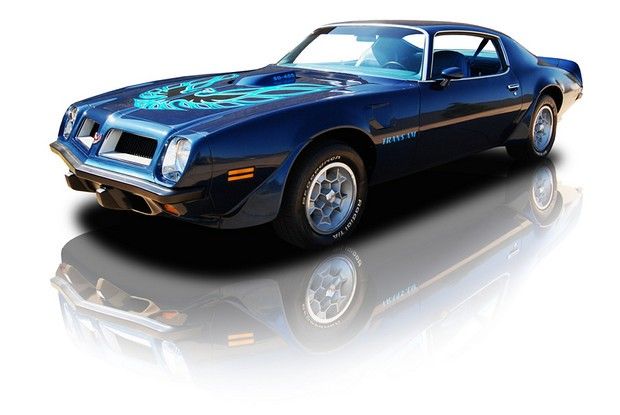
9. **1974 Trans Am Firebird**The Pontiac Firebird inevitably enters discussions about classic American muscle cars, and for good reason. The 1974 Trans Am Firebird, in particular, received a significant aesthetic upgrade that cemented its place in automotive history. It dramatically moved from monolithic, brick-like tail light units of its predecessors to a sleek new design featuring three distinct horizontal strips. This bold design choice was not merely a fleeting trend; it proved so popular and impactful that it remained a signature element of the second-generation Firebird, continuing through its final update in 1979. The 1974 model year is often regarded as the swan song for the true statement muscle car, emerging just before the automotive industry began to react to the looming gas crisis, which unfortunately led to a period of less inspired designs.
Beyond its innovative tail lights, the Trans Am variant was a beauty, shedding the “Coke bottle” shape of earlier models for a refined yet aggressive stance. Even base models were impressively equipped, boasting an engine-turned dashboard, dual exhausts, comfortable bucket seats, a heavy-duty transmission, a distinctive shaker hood, rally gauges, a clock, and a tachometer, offering a comprehensive cockpit experience. All these features were standard, highlighting the Firebird’s commitment to both style and substance from the factory floor.
While the standard powerplant was a robust 290 hp V8, the legendary 455 Super Duty V8, also delivering 290 hp, was the pinnacle of performance for the 1974 Trans Am and a more formidable, sought-after option. This particular engine represented the ultimate expression of the Firebird’s raw muscle, offering a driving experience that was as thrilling as its aesthetics suggested. It underscored Pontiac’s dedication to performance, even as the industry faced changing regulations and economic pressures.
With prices ranging from $3,335 ($32,000 today) for base models to $4,446 ($42,650 today) for the Trans Am, it offered incredible value for a car so richly endowed with both style and substance. The 1974 Trans Am Firebird remains a beloved classic, cherished by enthusiasts for its distinctive design, powerful presence, and its role as a defiant statement against an era of automotive compromise.
Car Model Information: 1983 Pontiac Firebird Trans Am 2D Coupe
Name: Pontiac Firebird
Caption: The second, third, and fourth generations of,the Pontiac Firebird Trans Am
Manufacturer: Pontiac (automobile)
Production: February 23, 1967 – August 30, 2002
ModelYears: 1967 – 2002
Class: Pony car,Muscle car
Platform: GM F platform
Related: Chevrolet Camaro
Layout: Front engine, rear-wheel-drive layout
Categories: 1970s cars, 1980s cars, 1990s cars, 2000s cars, All articles with dead external links
Summary: The Pontiac Firebird is an American automobile built and produced by Pontiac from the 1967 to 2002 model years. Designed as a pony car to compete with the Ford Mustang, it was introduced on February 23, 1967, five months after GM’s Chevrolet division’s platform-sharing Camaro. This also coincided with the release of the 1967 Mercury Cougar, Ford’s upscale, platform-sharing version of the Mustang.
The name “Firebird” was also previously used by GM for the General Motors Firebird series of concept cars in the 1950s.
Get more information about: Pontiac Firebird
Buying a high-performing used car >>>
Brand: Pontiac Model: Firebird
Price: $22,991 Mileage: 38,257 mi.
Read more about: Ten Iconic Jet Age Dream Machines: Unpacking the Designs, Power, and Legacy of Mid-Century Automotive Innovation

10. **1962 — 1966 Ford Cortina Mk 1**Our journey now takes us to the United Kingdom to celebrate the Ford Cortina, one of the most beloved British cars ever made. Manufactured from 1962 to 1982, the Mk 1 generation, produced between ’62 and ’66, was particularly instrumental in selling millions of units and establishing the Cortina as a household name. While the performant Lotus Cortina gained fame on the circuit, our focus remains on its stylish road-going siblings that captivated the public.
The truly distinctive tail lights we’re spotlighting here belong to the more sporty GT version, which arrived in 1963, a year after the initial Mk 1 launch. These units featured a unique three-section design, affectionately described as “pizza-like” in their configuration. It’s a design that bears a striking resemblance to certain BMW models from the early 2000s, showcasing a timeless aesthetic appeal that transcended its era and national origin, proving good design knows no boundaries.
That same year, 1963, Ford of Britain expanded the Cortina lineup with the introduction of the Mk1 Estate and Mk1 Super, each offering an upgraded, albeit distinct, set of features to cater to diverse customer needs. This versatility was a hallmark of the Cortina, which could be found in a myriad of variants including wagons, rally cars, and both two-door and four-door configurations, illustrating its adaptability and broad appeal across different segments of the market.
Despite its visual flair and sporty GT designation, the Mk1 GT’s performance was modest, even for its time. Equipped with a 1.5-liter inline four-cylinder engine paired with a four-speed manual gearbox, it delivered 59.5 hp and 97 lb-ft of torque, resulting in a 95 mph top speed and a leisurely 19.8-second 0-60 mph time. Its enduring charm lay more in its accessible nature and distinctive design than raw power, making it a beloved car for the masses rather than a speed demon.
Read more about: Beyond Nostalgia: 14 Legendary Classic Cars That Deserve a High-Performance Comeback Today
11. **1966 Thunderbird**The Ford Thunderbird, synonymous with American automotive luxury and style, truly hit its stride with the Series III models; the 1966 iteration stands out for its exceptional rear design. These Thunderbirds, affectionately known as the “Flair Birds,” showcased an elegance and sophistication that set them apart from their contemporaries. The tail lights on the ’66 model were particularly noteworthy, spanning the entire width of the tail, creating an expansive visual signature.
When illuminated, these magnificent lights created a striking, wall-to-wall glow, an unbroken horizontal band of light that was both immediately recognizable and highly distinctive. Beyond broad illumination, they featured sophisticated sequential turn signal indicators. This advanced feature caused the lights to pulse outwardly in the direction of the turn, offering a clear and stylish signal that captivated onlookers and became a hallmark of the era, elevating mere signaling to an art form.
Adding to the ’66 Thunderbird’s impeccable rear aesthetic was a central Thunderbird motif, elegantly integrated into the design. This iconic emblem, combined with a chic wraparound bumper and a slimline rear profile, culminated in one of the best rear ends ever conceived in Detroit. It was a masterclass in blending form and function, delivering both visual impact and practical signaling in one harmonious package, making it instantly iconic.
The 1966 Thunderbird represented a pinnacle of personal luxury, offering a blend of performance and comfort. While specific engine details for the ’66 aren’t detailed here, earlier Thunderbirds offered powerful V8s like a 5.8-liter with 300 hp or a burly 7.0-liter delivering 350 hp and 490 lb-ft of torque. This powerful lineage ensured the Thunderbird had the muscle to match its undeniably cool aesthetics and luxurious cruising capabilities, cementing its place as a true American classic.
Car Model Information: 2003 Ford Thunderbird
Name: Ford Thunderbird
Caption: 1957 Thunderbird
Manufacturer: Ford Motor Company
Production: unbulleted list
ModelYears: unbulleted list
Class: unbulleted list
Layout: Front-engine, rear-wheel drive layout
Categories: 1960s cars, 1970s cars, 1980s cars, 1990s cars, 2000s cars
Summary: The Ford Thunderbird is a personal luxury car manufactured and marketed by Ford Motor Company for model years 1955 to 2005, with a hiatus from 1998 to 2001.
Ultimately gaining a broadly used colloquial nickname, the T-Bird, the model was introduced as a two-seat convertible, subsequently offered variously in a host of body styles including as a four-seat hardtop coupe, four-seat convertible, five-seat convertible and hardtop, four-door pillared hardtop sedan, six-passenger hardtop coupe, and five-passenger pillared coupe, before returning in its final generation, again as a two-seat convertible.
At its inception, Ford targeted the two-seat Thunderbird as an upscale model. The 1958 model year design introduced a rear seat and arguably marked the expansion of a market segment that came to be known as personal luxury cars, positioned to emphasize comfort and convenience over handling and high-speed performance.
Get more information about: Ford Thunderbird
Buying a high-performing used car >>>
Brand: Ford Model: Thunderbird
Price: $14,600 Mileage: 49,430 mi.
Read more about: Sunken Sentinels: Unearthing Classic Cars from the World’s Mysterious Watery Graves
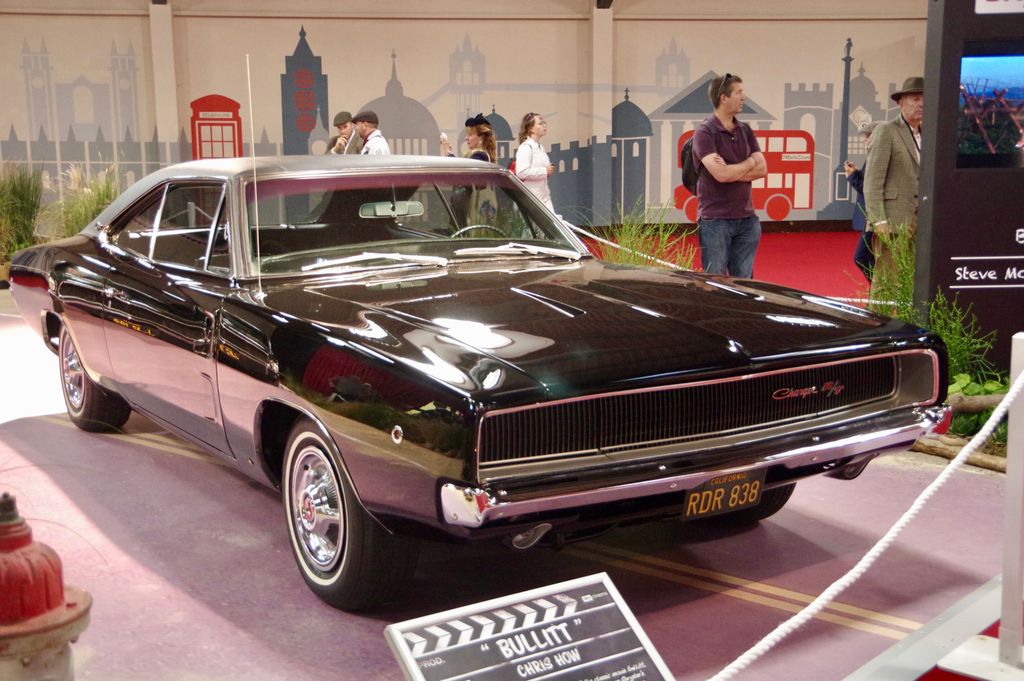
12. **1968 Dodge Charger**The 1968 Dodge Charger holds a revered place among iconic American muscle cars, a status significantly bolstered by its legendary tail lights. While round tail lights have graced countless cars over the decades, no vehicle executed them with quite the same panache as the ’68 Charger. Its design for the rear illumination was a stroke of genius, captivating enthusiasts and solidifying its ferocious identity with an unmistakable presence on the road.
The Charger featured twin bezels on each side, elegantly housed within chromed circular outlets that protruded assertively from distinctive blackout panels. This wasn’t merely a utilitarian arrangement; it was a deliberate design choice that imbued the rear of the car with an undeniable sense of aggression and purpose. This powerful visual statement was perfectly aligned with the car’s overall muscular demeanor, making it a favorite for generations of enthusiasts.
Taking a closer look, especially when these lights were illuminated, reveals a remarkable detail: they strikingly resemble the fiery exhausts of a fighter jet, precisely as the designers intended. This meticulous attention to detail, from the prominent placement of the circular lights to their evocative appearance, made the 1968 Charger’s rear end a true masterpiece. It communicated power, speed, and a hint of danger, perfectly encapsulating the muscle car ethos of the late 1960s.
While the 1966 Charger’s full-width light bar and the ’69 model’s “Dukes of Hazzard” fame influenced modern Chargers, the ’68 model’s specific four-circle arrangement remains uniquely admired. The 1968 Charger wasn’t just looks; it had the performance to back its menacing aesthetic. While this context focuses on tail lights, the Charger line was known for robust V8 engines delivering thrilling power and torque. Its aggressive styling and powerful drivetrain ensured it was a force on the street and a timeless automotive icon.
Car Model Information: 2023 Dodge Charger SRT Hellcat Widebody Jailbreak
Name: Dodge Charger
Caption: 1969 Dodge Charger
Manufacturer: Dodge
Production: 1966–1978,1981–1987,2005–present
ModelYears: 1966–1978,1982–1987,2006–present
Categories: 1960s cars, 1970s cars, 1980s cars, 2000s cars, 2010s cars
Summary: The Dodge Charger is a model of automobile marketed by Dodge in various forms over eight generations since 1966.
The first Charger was a show car in 1964. A 1965 Charger II concept car resembled the 1966 production version.
In the United States, the Charger nameplate has been used on mid-size cars, personal luxury coupes, subcompact hatchbacks, and full-size sedans.
Get more information about: Dodge Charger
Buying a high-performing used car >>>
Brand: Dodge Model: Charger
Price: $94,975 Mileage: 4,260 mi.
Read more about: 14 Untamed 1970 Muscle Cars That Still Roar and Resonate Today: A MotorTrend Deep Dive
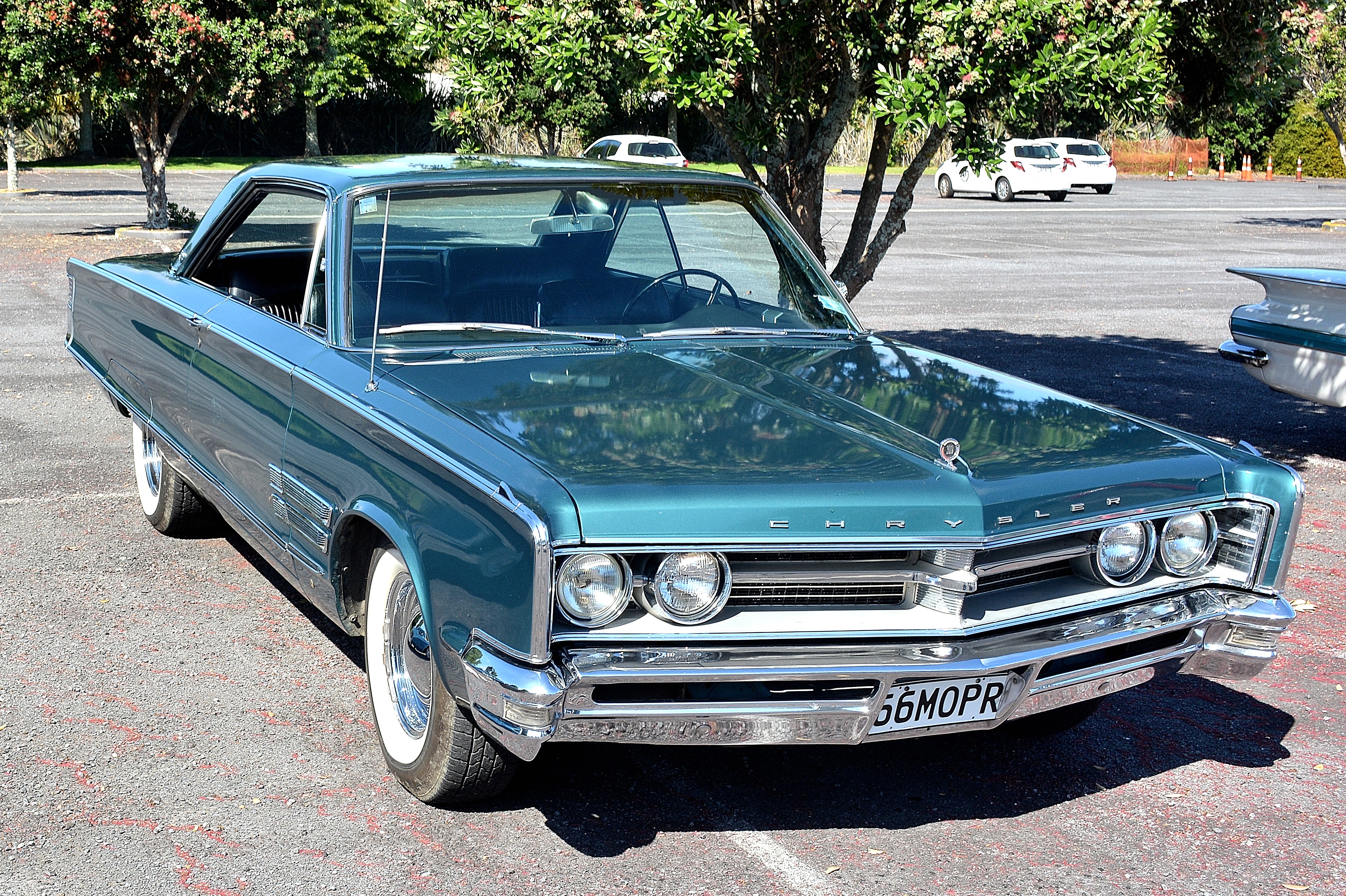
13. **1966 Chrysler 300**The 1966 Chrysler 300 is an unsung hero of automotive design, particularly for its truly captivating tail lights. While photos and advertisements of the era might not fully capture their brilliance, seeing them “in the metal” reveals their profound coolness, especially when they’re illuminated. This car perfectly blended elegance with a futuristic edge, a hallmark of Chrysler’s “Forward Look” design language that truly defined an era of bold automotive statements.
What makes these tail lights truly impressive is the way the red glow from the lenses glints off the ultra-slim horizontal chrome bars. This interaction creates a dynamic visual effect, adding depth and sophistication to the rear profile. The knife-edged fender wraparound further enhances this perception of class, contributing to a sleek and purposeful stance that was ahead of its time, making the car a head-turner wherever it went.
A unique design element is how the boot lid is precisely cut out at the very edge of the tail lights, allowing them to appear as long, one-piece affairs. But perhaps the most striking feature is how far the side rear quarter panels extend past the line of the boot, carrying the tail lights with them in ultra-narrow housings. This intricate detail evokes the rear gunner position of a WWII bomber, a powerful and evocative image that underscores the car’s bold design and engineering.
The Chrysler 300 series, known for its high-performance “Letter Series” variants, blended luxury and raw power. While 1966 engine details aren’t provided here, the 1957 Chrysler 300C, for example, featured a menacing 6.4-liter Hemi V8, producing 375 horsepower and 420 lb-ft of torque. This powerful lineage suggests formidable performance, ensuring the 1966 model had plenty of muscle to accompany its unparalleled visual appeal, establishing it as a true grand touring machine.
Car Model Information: 2020 Chrysler 300 Touring
Name: Chrysler 300
Aka: Lancia Thema
Manufacturer: Chrysler (automotive brand)
Production: February 1, 2004– December 2023
ModelYears: 2005–2023
Class: Executive car
Layout: Front-engine, rear-wheel-drive layout,automobile layout
Predecessor: Chrysler 300M,Chrysler Concorde,Chrysler Intrepid
Categories: 2010s cars, All articles with dead external links, All articles with unsourced statements, Articles with dead external links from June 2025, Articles with short description
Summary: The Chrysler 300 is a full-size car manufactured and marketed by Stellantis North America and its predecessor companies. It was available as a four-door sedan and station wagon in its first generation (model years 2005–2010), and solely as a four-door sedan in its second generation (model years 2011–2023).
The second generation 300 was marketed as the Chrysler 300C in the United Kingdom and Ireland and as the Lancia Thema in the remainder of Europe.
Get more information about: Chrysler 300
Buying a high-performing used car >>>
Brand: Chrysler Model: 300
Price: $21,595 Mileage: 66,337 mi.
Read more about: Ten Iconic Jet Age Dream Machines: Unpacking the Designs, Power, and Legacy of Mid-Century Automotive Innovation

14. **1963 Chevrolet Impala**The 1963 Chevrolet Impala stands as a testament to American automotive design prowess, particularly in its distinctive approach to rear lighting. While Ford pioneered circular tail lights in the late 1950s, Chevrolet skillfully differentiated its offerings. Instead of enormous, singular lenses, Chevy opted for a visually striking triple-set up, with the ’63 Impala representing the pinnacle of this design philosophy, creating an instantly recognizable rear signature.
These iconic lights were housed within a metallic-finish panel that spanned the entire rear of the vehicle, providing a cohesive and upscale appearance. Each of the three lights protruded elegantly from metallic housings, further accented by chromed rings at their outer extremity. This multi-layered design added depth and a touch of luxury, making the Impala’s rear end instantly recognizable and highly admired, a true hallmark of 1960s American automotive styling.
An intriguing aspect is how four of the six lenses were integrated with the boot lid. This created a fascinating visual effect when the lights were on, a broad, glowing signature across the rear. While perhaps not intended to “bounce red warning beacons off the clouds,” as humorously suggested, it certainly made for a commanding presence on the road, distinguishing it from all other full-sized cars of its era with its unique illumination pattern.
The 1963 Impala offered powerful V8 engines matching its impressive styling. Though specific engine details aren’t provided for this model, the 1959 Impala (mentioned elsewhere) came with a top-tier 5.7-liter Special Turbo-Thrust V8, delivering 315 horsepower and 356 lb-ft of torque. This lineage confirms the ’63 Impala combined distinctive design with robust American power, making it a beloved classic that offered both visual flair and impressive performance for its time.
Car Model Information: 1966 Chevrolet Impala SS
Name: Chevrolet Impala
Caption: Fourth generation model (1967)
Manufacturer: Chevrolet
Production: 1957–1985,1994–1996,1999–2020
ModelYears: 1958–1985,1994–1996,2000–2020
Predecessor: Chevrolet Bel Air,Chevrolet Lumina#Second generation (1995–2001)
Successor: Chevrolet SS,Chevrolet Caprice
Platform: GM B platform,GM W platform,GM W platform (GMX211) (2005–2013),GM Epsilon platform#Epsilon II
Class: Full-size car,Mid-size car
Layout: Front-engine, rear-wheel-drive layout,Front-engine, front-wheel-drive layout
Categories: 1960s cars, 1970s cars, 1980s cars, 1990s cars, 2000s cars
Summary: The Chevrolet Impala () is a full-size car that was built by Chevrolet for model years 1958 to 1985, 1994 to 1996, and 2000 to 2020. The Impala was Chevrolet’s popular flagship passenger car and was among the better-selling American-made automobiles in the United States.
For its debut in 1958, the Impala was distinguished from other models by its symmetrical triple taillights. The Chevrolet Caprice was introduced as a top-line Impala Sport Sedan for model year 1965, later becoming a separate series positioned above the Impala in 1966, which, in turn, remained above the Chevrolet Bel Air and the Chevrolet Biscayne. The Impala continued as Chevrolet’s most popular full-sized model through the mid-1980s. Between 1994 and 1996, the Impala was revised as a 5.7-liter V8–powered version of the Chevrolet Caprice Classic sedan.
In 2000, the Impala was reintroduced again as a mainstream front-wheel drive car. In February 2014, the 2014 Impala ranked No. 1 among Affordable Large Cars in U.S. News & World Report’s rankings. When the 10th generation of the Impala was introduced for the 2014 model year, the 9th generation was rebadged as the Impala Limited and sold only to fleet customers through 2016. During that time, both versions were sold in the United States and Canada. The 10th-generation Impala was also sold in the Middle East and South Korea.
Get more information about: Chevrolet Impala
Buying a high-performing used car >>>
Brand: Chevrolet Model: Impala
Price: $56,991 Mileage: 51,426 mi.
Read more about: Sunken Sentinels: Unearthing Classic Cars from the World’s Mysterious Watery Graves
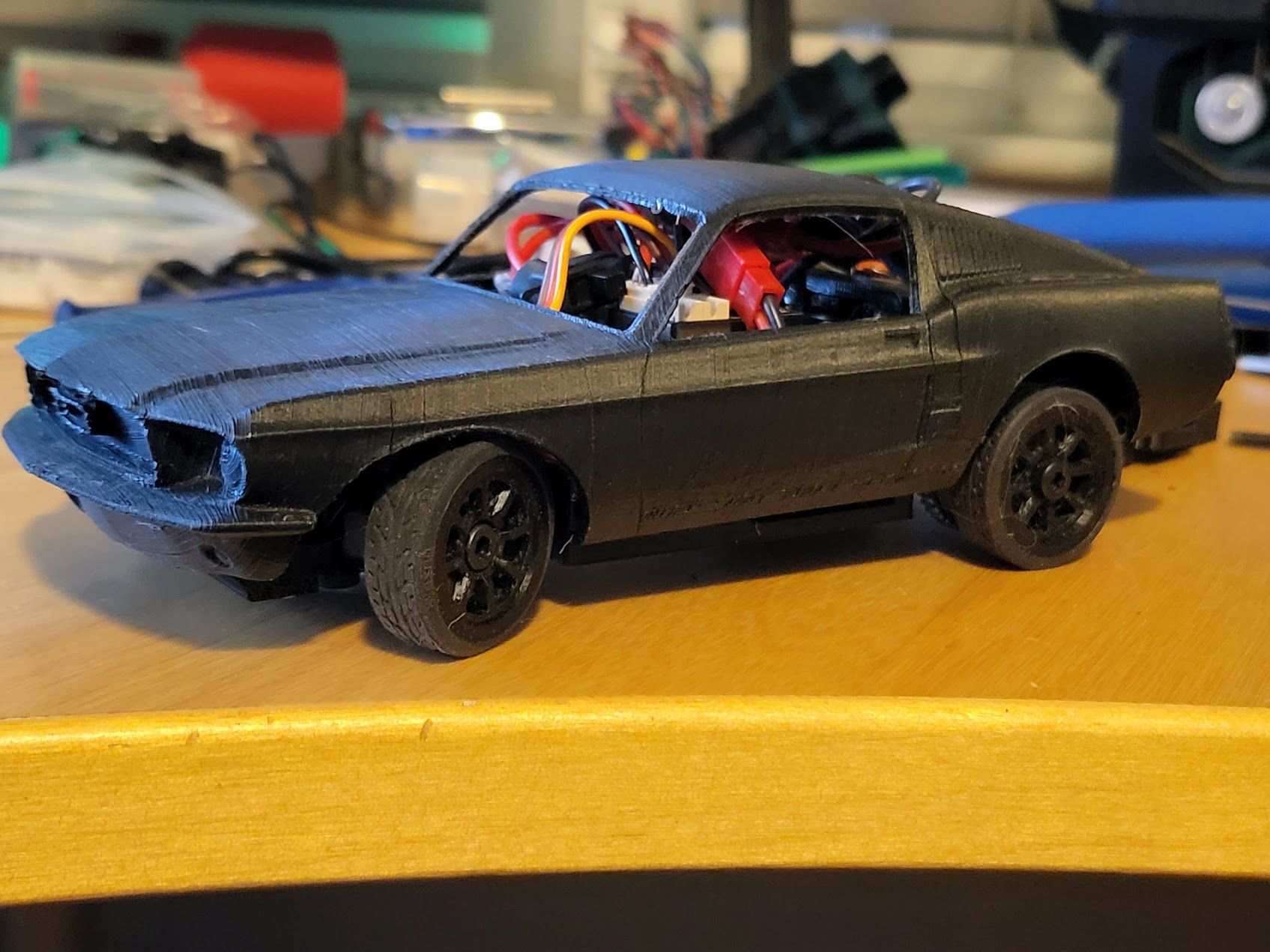
15. **1967 Ford Mustang Fastback**Concluding our captivating tour of classic cars with exceptionally cool tail lights, we arrive at an icon that needs little introduction: the 1967 Ford Mustang Fastback. While the stylish units from the very first Mustang model are undeniably famous, Ford managed to elevate the rear aesthetic even further with the second-generation models, introduced in 1967. The Fastback, in particular, showcased a rear design that was truly a styling tour de force, cementing its legendary status.
The 1967 Fastback featured six individual concave lenses, each meticulously housed within its own gleaming chrome bezel. This intricate arrangement, a departure from previous designs, seamlessly integrated into the curved rear valance, significantly enhancing the car’s dynamic, flowing appearance, especially when illuminated. This multi-lens setup provided a sophisticated and detailed look that differentiated it from its predecessors and contemporaries.
Beyond the tail lights, the Fastback’s rear end was a masterclass in cohesive design. It boasted a race-inspired hinged gas cap, adding a touch of sporty elegance, and thoughtfully placed under-bumper backup lights for practicality. The optional chrome exhaust tips peeking out from carefully crafted cutouts completed the picture, ensuring that the rear of the 1967 Fastback was not just attractive, but a complete and harmonious visual statement that truly captured the spirit of the era.
The 1967 Mustang Fastback offered a variety of engines, catering to diverse performance desires. While not explicitly detailed here, its derivative, the Mercury Cougar, offered a 4,735 cc engine (200-225 hp). Performance iterations, like the Shelby GT500, could be outfitted with even more potent powerplants, solidifying its reputation as a powerful, stylish American classic. Its enduring popularity among enthusiasts speaks volumes about its timeless appeal and stunning rear design, making it an undeniable highlight of automotive history.
Car Model Information: 2024 Ford Mustang Mach-E GT
Name: Ford Mustang
Caption: 2018 Ford Mustang GT 5.0
Aka: Ford T5 (Germany)
Manufacturer: Ford Motor Company
Production: March 1964 – present
ModelYears: 1965–present
Class: Unbulleted list
BodyStyle: Unbulleted list
Layout: Front-engine, rear-wheel-drive layout
Categories: 1970s cars, 1980s cars, 1990s cars, 2+2 coupés, 2000s cars
Summary: The Ford Mustang is a series of American automobiles manufactured by Ford. In continuous production since 1964, the Mustang is currently the longest-produced Ford car nameplate. Currently in its seventh generation, it is the fifth-best selling Ford car nameplate. The namesake of the “pony car” automobile segment, the Mustang was developed as a highly styled line of sporty coupes and convertibles derived from existing model lines, initially distinguished by “long hood, short deck” proportions.
Originally predicted to sell 100,000 vehicles yearly, the 1965 Mustang became the most successful vehicle launch since the 1927 Model A. Introduced on April 17, 1964 (16 days after the Plymouth Barracuda), over 400,000 units were sold in its first year; the one-millionth Mustang was sold within two years of its launch. In August 2018, Ford produced the 10-millionth Mustang; matching the first 1965 Mustang, the vehicle was a 2019 Wimbledon White convertible with a V8 engine.
The success of the Mustang launch led to multiple competitors from other American manufacturers, including the Chevrolet Camaro and Pontiac Firebird (1967), AMC Javelin (1968), and Dodge Challenger (1970). It also competed with the Plymouth Barracuda, which was launched around the same time. The Mustang also had an effect on designs of coupes worldwide, leading to the marketing of the Toyota Celica and Ford Capri in the United States (the latter, by Lincoln-Mercury). The Mercury Cougar was launched in 1967 as a unique-bodied higher-trim alternative to the Mustang; during the 1970s, it included more features and was marketed as a personal luxury car.
From 1965 until 2004, the Mustang shared chassis commonality with other Ford model lines, staying rear-wheel-drive throughout its production. From 1965 to 1973, the Mustang was derived from the 1960 Ford Falcon compact. From 1974 until 1978, the Mustang (denoted Mustang II) was a longer-wheelbase version of the Ford Pinto. From 1979 until 2004, the Mustang shared its Fox platform chassis with 14 other Ford vehicles (becoming the final one to use the Fox architecture). Since 2005, Ford has produced two generations of the Mustang, each using a distinct platform unique to the model line.
Through its production, multiple nameplates have been associated with the Ford Mustang series, including GT, Mach 1, Boss 302/429, Cobra (separate from Shelby Cobra), and Bullitt, along with “5.0” fender badging (denoting 4.9 L OHV or 5.0 L DOHC V8 engines).
Get more information about: Ford Mustang
Buying a high-performing used car >>>
Brand: Ford Model: Mustang
Price: $39,860 Mileage: 3,879 mi.
Read more about: Sunken Sentinels: Unearthing Classic Cars from the World’s Mysterious Watery Graves
And there you have it – a comprehensive journey through some of automotive history’s most remarkable tail light designs. From 1950s jet-inspired aspirations to late 90s pioneering LEDs, these luminous signatures were always more than just safety features. They are declarations of style, testaments to engineering ingenuity, and unforgettable symbols defining their eras. Each car, with its distinctive rear glow, reminds us that true automotive artistry lies in every detail, turning metal and glass into rolling works of art that continue to captivate and inspire.

